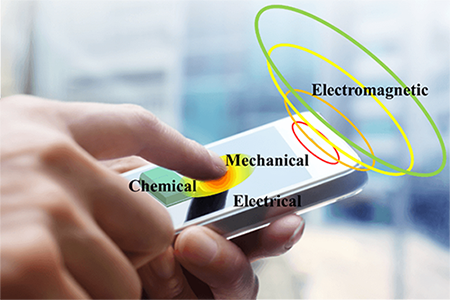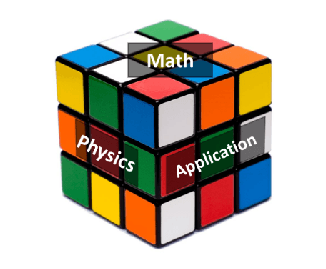History, Definition and Scope
Introduction to Multiphysics
We live in a multiphysics world. Real-life processes are inherently multiphysics. From atoms to galaxies, from amino-acids to living organisms, naturally built systems involve various types of physical phenomena operating at different spatial and temporal scales. We have been dealing with this multiphysics world even before the civilization of human beings. For example, a nature fire from lightning is a typical electrostatic, thermal, and chemical phenomenon. Fire starting with a hand drill involves both mechanical and thermal processes. Surprisingly, while multiphysics is part of nature and history of lives, the study of multiphysics, is not new either. Despite the studies which are by nature multiphysics but were not traditionally counted, multiphysics research has been on the playground for a couple of decades.

In fact, multiphysics has been developed beyond a research concept. For example, in industrial design and product testing, engineers used to solve one physical phenomenon at a time, such as structural integrity, then import the results into another system to solve for the aerodynamic behavior. Multiphysics simulation tools now allow them to simulate and analyze both these behaviors and many others at the same time. Multiphysics has rapidly developed into a research and application area across many science and engineering disciplines. There is a clear trend that more and more challenging problems we are faced with do not involve physical processes covered by a single traditional discipline in science or engineering disciplines. This trend requires us to extend our analysis capacity to solve more complicated and more multidisciplinary problems, advance the front-edge of engineering and applied sciences by exploring these problems, contribute back to the software development and computing techniques, and establish and explore innovative but urgent application areas.
Multiphysics is defined as the coupled processes or systems involving more than one simultaneously occurring physical fields and the studies of and knowledge about these processes and systems. For example, objects moving due to Newton's second law will be viewed as an example of multiphysics as long as velocity will be calculated at every point of the domain, that is, to obtain a field. However, a model of a star cluster that resolves Newtonian gravitational interactions or molecular dynamics, which is built upon Newton's second law, is not multiphysics according to this definition. From a mathematical perspective, systems consisting of Partial Differential Equations (PDEs) of different types (e.g., elliptic-parabolic, elliptic-hyperbolic, or parabolic-hyperbolic) may be classified as multiphysics because each of the classical PDE archetypes possibly represents a different physical phenomenon. This definition is given based on the existing definitions in [Keyes et al., 2012], [COMSOL], [Krzhizhanovskaya and Sun, 2007; Groen et al., 2013], and [Cross et al., 2005].

Multiphysics is an art of mathematics, physics, and applications. Just as shown in the above figure, math, physics, and application provide three independent angles to perceive multiphysics. As a result, a complete description of a mathematical problem needs input from all the three aspects. In detail, the mathematical model should be established based on the real physical conditions for practical problems in various engineering and science disciplines. The math here includes both the basic languages for talking about multiphysics such as tensor analysis and differential equations and the tool for acquiring solutions.












